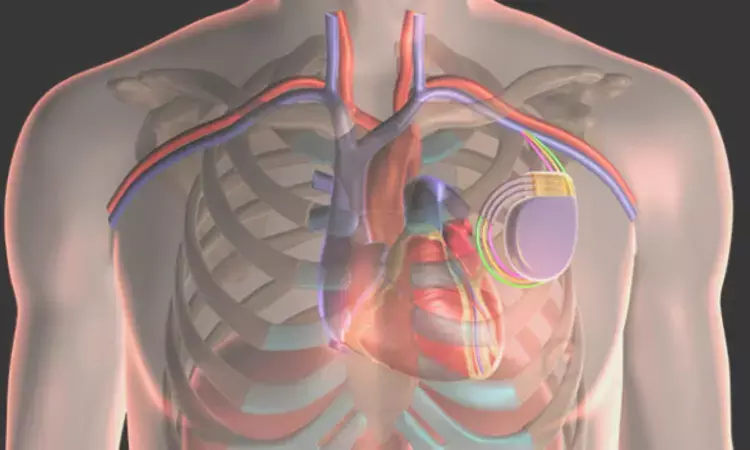- Home
- Medical news & Guidelines
- Anesthesiology
- Cardiology and CTVS
- Critical Care
- Dentistry
- Dermatology
- Diabetes and Endocrinology
- ENT
- Gastroenterology
- Medicine
- Nephrology
- Neurology
- Obstretics-Gynaecology
- Oncology
- Ophthalmology
- Orthopaedics
- Pediatrics-Neonatology
- Psychiatry
- Pulmonology
- Radiology
- Surgery
- Urology
- Laboratory Medicine
- Diet
- Nursing
- Paramedical
- Physiotherapy
- Health news
- Fact Check
- Bone Health Fact Check
- Brain Health Fact Check
- Cancer Related Fact Check
- Child Care Fact Check
- Dental and oral health fact check
- Diabetes and metabolic health fact check
- Diet and Nutrition Fact Check
- Eye and ENT Care Fact Check
- Fitness fact check
- Gut health fact check
- Heart health fact check
- Kidney health fact check
- Medical education fact check
- Men's health fact check
- Respiratory fact check
- Skin and hair care fact check
- Vaccine and Immunization fact check
- Women's health fact check
- AYUSH
- State News
- Andaman and Nicobar Islands
- Andhra Pradesh
- Arunachal Pradesh
- Assam
- Bihar
- Chandigarh
- Chattisgarh
- Dadra and Nagar Haveli
- Daman and Diu
- Delhi
- Goa
- Gujarat
- Haryana
- Himachal Pradesh
- Jammu & Kashmir
- Jharkhand
- Karnataka
- Kerala
- Ladakh
- Lakshadweep
- Madhya Pradesh
- Maharashtra
- Manipur
- Meghalaya
- Mizoram
- Nagaland
- Odisha
- Puducherry
- Punjab
- Rajasthan
- Sikkim
- Tamil Nadu
- Telangana
- Tripura
- Uttar Pradesh
- Uttrakhand
- West Bengal
- Medical Education
- Industry
Left bundle branch pacing-CRT better for patients with heart failure and LVEF

China: In heart failure patients with nonischemic cardiomyopathy and left bundle branch block (LBBB), left bundle branch pacing (LBBP) cardiac resynchronization therapy (CRT) shows more significant improvement in left ventricular ejection fraction (LVEF) than biventricular pacing (BiVP), states a recent study. The Journal of the American College of Cardiology (JACC) mentioned the study.
Left bundle branch pacing, a most rapidly growing conduction system pacing technique, is capable of correcting intrinsic left bundle branch block. It could be an optimal alternative to CRT with biventricular pacing. Yao Wang, Department of Cardiology, First Affiliated Hospital, Nanjing Medical University, Nanjing, China, and colleagues aimed to compare the effectiveness of LBBP-CRT with BiVP-CRT in patients with heart failure reduced left ventricular ejection fraction (LVEF) in a prospective, randomized trial.
The trial included patients with nonischemic cardiomyopathy and LBBB having a 6-month preplanned follow-up. In case of failure of LBBP or BiVP, crossovers were allowed.
The difference in LVEF improvement between the two groups was the primary endpoint. The secondary endpoints were changes in N-terminal pro–B-type natriuretic peptide (NT-proBNP), echocardiographic measurements, 6-minute walk distance, New York Heart Association functional class, CRT response, and QRS duration. A total of 40 consecutive patients comprising 20 males (mean age 63.7 years, LVEF 29.7% ± 5.6%) were included in the study.
Following were the study's main findings:
- Crossovers occurred in 10% of LBBP-CRT and 20% of BiVP-CRT.
- All patients completed follow-up. Intention-to-treat analysis showed significantly more LVEF improvement six months after LBBP-CRT than BiVP-CRT (mean difference: 5.6%).
- LBBP-CRT also appeared to have more significant reductions in left ventricular end-systolic volume (−24.97 mL) and NT-proBNP (−1,071.80 pg/mL), and comparable changes in New York Heart Association functional class, QRS duration, 6-minute walk distance, and rates of CRT response compared with BiVP-CRT.
The researchers conclude, "Left bundle branch pacing cardiac resynchronization therapy trumped biventricular pacing for improved surrogate markers of heart function in heart failure with nonischemic cardiomyopathy and left bundle branch block."
Reference:
The study, "Randomized Trial of Left Bundle Branch vs Biventricular Pacing for Cardiac Resynchronization Therapy," was published in the Journal of the American College of Cardiology (JACC).
Dr Kamal Kant Kohli-MBBS, DTCD- a chest specialist with more than 30 years of practice and a flair for writing clinical articles, Dr Kamal Kant Kohli joined Medical Dialogues as a Chief Editor of Medical News. Besides writing articles, as an editor, he proofreads and verifies all the medical content published on Medical Dialogues including those coming from journals, studies,medical conferences,guidelines etc. Email: drkohli@medicaldialogues.in. Contact no. 011-43720751


